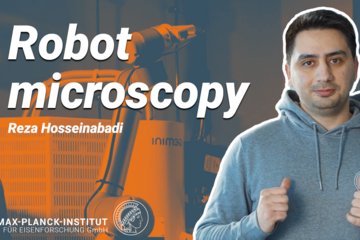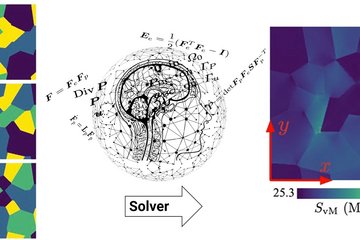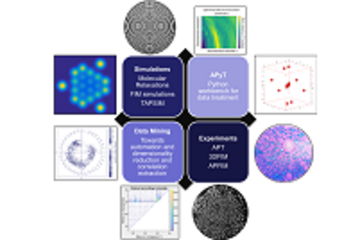All genres
361.
Talk
Grain Boundary Oxidation Processes and High Temperature Corrosion. GTT-Workshop on Thermodynamic Simulations in Industry, Herzogenrath, Aachen, Germany (2010)
362.
Talk
Kelvin Force Microscopy Investigation on Hydrogen Permeation in Palladium. Nanomeasure 2010, Krakow,Poland (2010)
363.
Talk
Thermodynamic Simulations of the Oxidation Processes in Polycrystalline Metallic Alloys. International Workshop “Grain boundary diffusion, stresses and segregation”, Moscow, Russia (2010)
364.
Talk
Mobility of Water and Charge Carriers in Polymer/Oxide/Aluminium Alloy Interphases. M2i Cluster6 (Durability) Meeting, Velsen-Noord, The Netherlands (2010)
365.
Talk
Numerical Investigation of Electrode Surface Potential Mapping with Scanning Electrochemical Potential Microscopy. The 12th International Scanning Probe Microscopy Conference, Sapporo, Japan (2010)
366.
Talk
Application of Conducting Polymers for the Corrosion Protection of Iron and Zinc. Advances in Corrosion Science for Lifetime Prediction and Sustainability: ISE 8th Spring Meeting, Columbus, Ohio, USA (2010)
367.
Talk
SECPM Study: Influence of the Tip Material and Its Coating on the Accuracy of Potential Profiling Across Electrical Double Layer at Solid/Liquid Interface. 217th ECS Meeting, Vancouver, Canada (2010)
368.
Talk
Numerical simulation of probing the electric double layer by scanning electrochemical Potential microscopy. 217th ECS Meeting, Vancouver, Canada (2010)
369.
Talk
Self-assembled monolayers in corrosion research. Chemisches Kolloquium, Institut für Anorganische und Analytische Chemie, Johann Wolfgang Goethe-Universität, Frankfurt a. M., Germany (2010)
370.
Talk
On the meaning of electrode potentials measured by Kelvin probe on coated and bare metal surfaces. 217th ECS Meeting, Vancouver, Canada (2010)
371.
Talk
High Resolution Study of Hydrogen Permeation through Metals by Scanning Kelvin Probe Force Microscopy. 217th ECS Meeting, Vancouver, Canada (2010)
372.
Talk
Metal/Electrolyte interfaces under atmospheric corrosion conditions. DPG Frühjahrstagung, Regensburg, Germany (2010)
373.
Talk
Intelligent corrosion protection by organic and by metal based nano composite coatings. CORROSION 2010, Henry B. Gonzalez Convention Center, San Antonio, TX, USA (2010)
374.
Talk
Geplante Forschung zu Batterien im Rahmen des Zentrums für Elektrochemie (CES) und des Kompetenzverbundes Nord. Batterietag Münster, Münster, Germany (2010)
375.
Talk
Thermodynamic Stability and Reaction Sequence for High Temperature Oxidation Processes in Steels. International Symposium “High Temperature Oxidation and Corrosion”, Zushi (Tokyo), Japan (2010)
376.
Talk
Localized measurement of Hydrogen amount in Metals by SKP. 6th International Conference on Diffusion in Solids and Liquids (DSL 2010), Paris, France (2010)
377.
Talk
High sensitivity permeation measurement set-up based on Scanning Kelvin Probe. 217th ECS Meeting, Vancouver, Canada (2010)
378.
Talk
Intelligent corrosion protection by organic and by metal based nano composite coatings. Chemical Nanotechnology Talks X, Frankfurt a. M., Germany (2010)
379.
Talk
Mobility of Water and Charge Carriers in Polymer/Oxide/Aluminium Alloy Interphases. M2i/DPI Project Meeting, Delft, The Netherlands (2009)
380.
Talk
Numerical simulation of probing the electric double layer by scanning electrochemical potential microscopy. International Workshops on Surface Modification for Chemical and Biochemical Sensing, Przegorzaly, Poland (2009)











